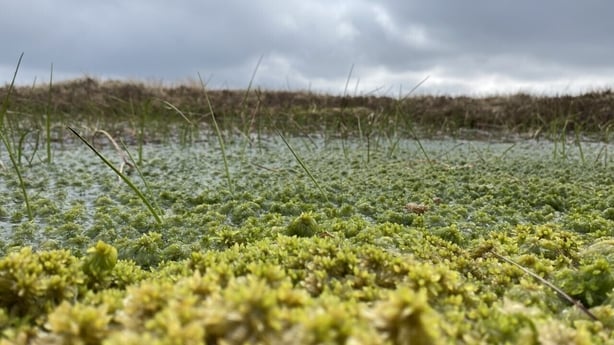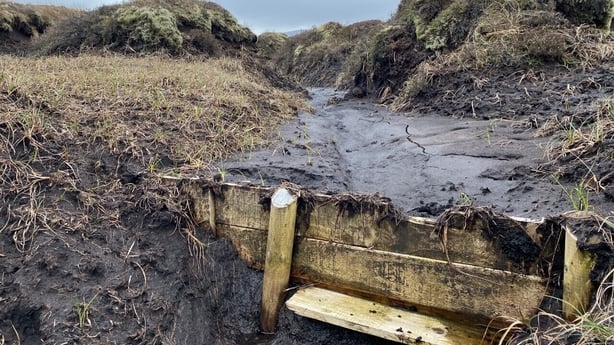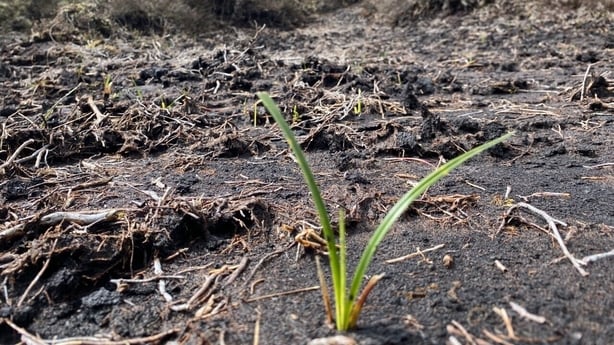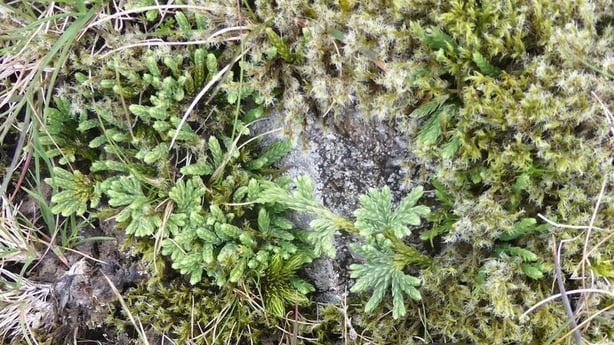|
While Irish mountains are not the biggest or most spectacular, they have their own beauty which draws many visitors both domestic and international. That beauty is fragile and is already feeling the effects of climate change.
Wicklow is the most mountainous county. It has many attractions, including its coastline, but the mountains which thousands of visitors enjoy every weekend are a star. Fred Verdier, tourism officer with Wicklow County Council says the hills here can enchant.
"The colours, the vegetation, the flora, the fauna is unique here, and the fact that weather changes all the time, the light, it's an ever changing world."
 The Wicklow Mountains attract thousands of visitors each year
The Wicklow Mountains attract thousands of visitors each year
The problem now is it is not just the weather that is changing, the warming climate is altering the mountain landscape at an unprecedented speed.
Hugh McLindon, is a conservation ranger in the Wicklow Mountains National Park with the National Parks Wildlife Service (NPWS). Barnacullian Mountain in West Wicklow is part of his work area and what he sees on his regular trips there troubles him.
"This is literally what keeps me awake at night, absolutely, because every time I come up, it’s changed, the shape of the land in front of me has changed."
The bog on the mountain was badly damaged by fire and grazing over the year and in some areas the bare peat is exposed. Changing weather patterns, as predicted by climate scientists, are accelerating the erosion and in some areas the peat is already gone leaving just bedrock.
Longer, hotter dry spells in the summer turn the peat to dust and it blows away. More intense rainfall events in the winter and spring wash tons of peat off the hill. This year saw the wettest March in Ireland since records began and Mr McLindon says that brought devastation to the peat on Barnacullian.
"I would come up every week and I would see truckloads of it literally moved around the place, so gullies we had dammed up would suddenly be instantly full of sediment."
The dams are part of a pilot conservation project the NPWS has started on the hill. Mr McLindon and other staff work with volunteers and the first step is to put wooden dams into gullies which have formed on the bog.
 The dams are part of a pilot conservation project the NPWS has started on the hill
The dams are part of a pilot conservation project the NPWS has started on the hill
They are normally knee high and around one metre wide. Mr McLindon says the fact they can fill up so quickly shows how much peat is being lost.
"It's much more mobile I think than we appreciate, especially as climate change intensifies."
The dams bring up the water levels rewetting the bog. The next stage is to fence off areas to keep grazing animals, sheep or deer, out. Then comes grass seed and a layer of heather cuttings to protect the peat from the weather.
The roots of the grass stabilise the top layer allowing other plants to establish. The aim is to create an environment where sphagnum moss can grow. This plant which excels at absorbing both water and carbon is what builds bogs. It can slowly reverse the erosion seen on many degraded bogs across Ireland.
 The roots of the grass stabilise the top layer allowing other plants to establish
The roots of the grass stabilise the top layer allowing other plants to establish
Healthy growing bogs are massive carbon sinks, but nearly all of Wicklow’s blanket bogs are so badly eroded they have become carbon sources. When peat is exposed to the air, it oxidises and this releases carbon into the atmosphere.
When it is washed into rivers by rain it breaks down releasing ammonium and other pollutants, acidifying the water. A healthy bog filters and stores water supporting biodiversity both on the bog and downstream.
A healthy bog is also more resilient but drier summer conditions make the degraded bogs in Wicklow more vulnerable to hazards like wildfires. Fires are nearly always started by humans, but climate change is making them more dangerous.
Helen Lawless, access and conservation officer with Mountaineering Ireland says more fires are burning on landscapes than ever before.
"The landscapes we love have less capacity to respond when things like fires happen, we’re seeing fires burning intensely and more extensively than they have before."
She says fires are not the only impact of climate change on Irish mountains.
"People look at mountains, they’re big, they look rugged, but they’re sensitive to change and we’re seeing evidence of that change with a change in distribution of some of our mountain plants."
The UN Panel of Climate Change has documented that plant and animal species are moving to higher altitudes as temperatures rise, but the problem is when they get to the top of a hill there is nowhere left to go.
Ms Lawless says Irish mountains are home to some rare plants.
"We are at risk of losing some of our rare mountain plants, like for example Alpine Clubmoss and Stag’s Horn Clubmoss, both of which are found on the mountains around here."
 Alpine Clubmoss (pic: Mountaineering Ireland)
Alpine Clubmoss (pic: Mountaineering Ireland)
It is said that climate action is the best antidote to climate anxiety and Mountaineering Ireland members are among the volunteers who join Mr McLindon at the pilot project on Barnacullian every week.
Mr McLindon says the difference it is making is a source of hope.
With so many of Ireland’s bogs badly degraded and emitting carbon Ms Lawless hopes the project at Barnacullian can be scaled up and applied to other locations.
"We will also see an increase in biodiversity in those areas and this will benefit everybody in society and obviously a more biodiverse landscape provides a richer recreational experience as well."
|